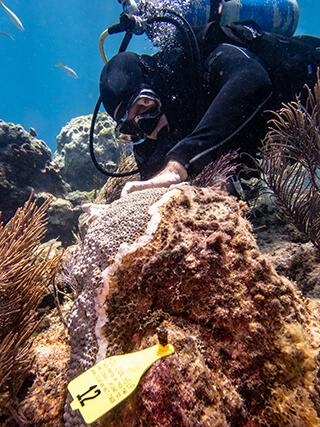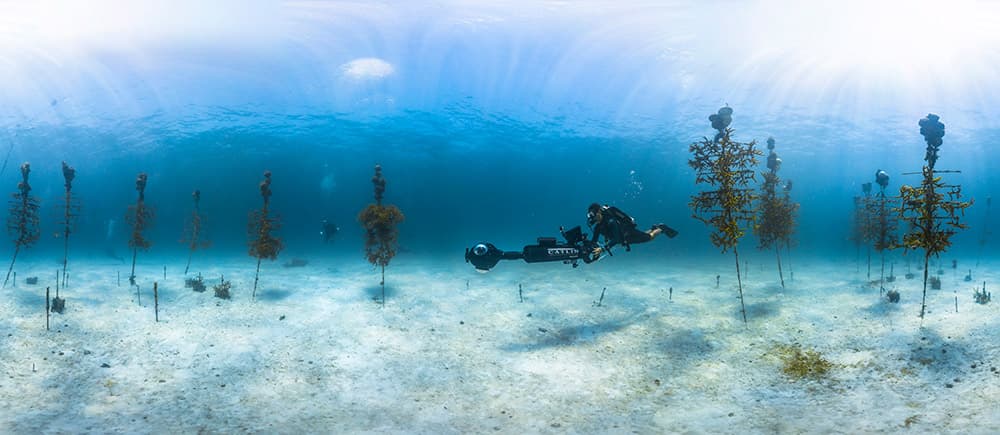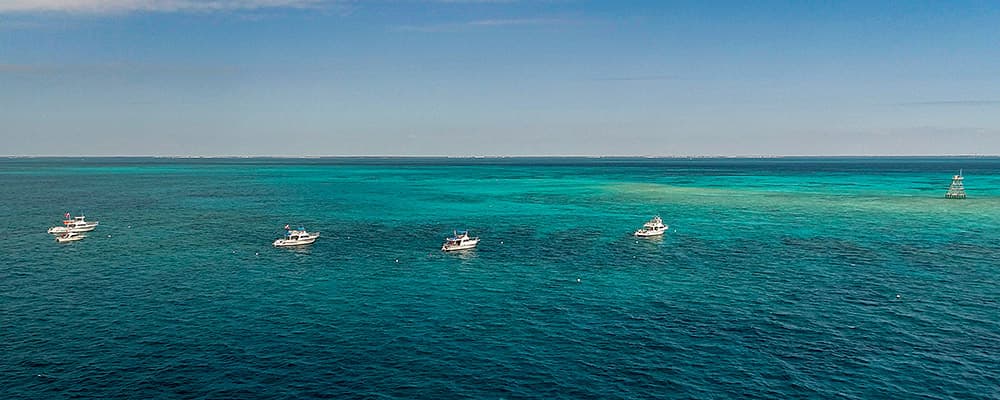John Armor

Although I have never lived in Monroe County, Florida Keys National Marine Sanctuary has been a part of my life since the mid-1990s. The first time I even heard about a sanctuary in the Florida Keys was as an educational instructor at SeaWorld of Florida taking young kids down to the Keys for educational adventure camps.
Then the sanctuary touched me again in the late 1990s when I was an environmental specialist with the Florida Department of Environmental Protection (FDEP), based in Fort Myers. In that position I spent a fair amount of time working with sanctuary officials and supporting the FDEP's Marathon office, especially after Hurricane Georges.
By the time I finally landed my dream job at NOAA at the turn of the century, sanctuary waters were already thick in my veins. From the early days helping the team review permit applications then later helping move management plans and regulatory actions forward, helping to protect sanctuary waters has always been a priority. Now, as director of NOAA's Office of National Marine Sanctuaries, the Florida Keys sanctuary simultaneously embodies and exemplifies our program's most pressing challenges and significant opportunities for making a real difference.

Florida Keys National Marine Sanctuary, and the dedicated team of folks charged with its management over the years, has protected the ecosystem, the history, and the community in a number of ways. While most people will think first about the innovative zoning scheme implemented in the late 1990s, I believe the most important contributions to the Florida Keys ecosystem relate to the bright light that the sanctuary designation has shown on the waters of the Florida Keys and the array of marine habitats and wildlife there. The cutting edge research and monitoring we conduct and coordinate in the sanctuary has tremendous value in informing the public about the plight of our fragile marine resources, which are the lifeblood of the local economy.
All of the efforts to engage the public in the challenges being faced by the sanctuary and how those efforts, whether it is hosting thousands of visitors at the Nancy Foster Center or engaging teachers and students in K-12 programs, have enlisted an army to help us protect this place. These efforts have helped win the hearts and minds of the people on the docks and in the waters in ways far beyond anything we could do ourselves.
What is the sanctuary's greatest accomplishment? In my mind, it's either the mooring buoy program or the advisory council. Both of these programs have had direct and positive impacts on the sanctuary. The mooring buoy program has saved thousands of corals from anchor damage, and also helps those who are less familiar with the waters navigate their way around the sanctuary zones. The advisory council provides a first of its kind venue for the Florida Keys community to come together, talk about the problems they're seeing, and to develop real solutions.

As ONMS director, I have seen that both of these accomplishments were not only instrumental for the Florida Keys, but are also examples of effective management that have permeated the rest of the sanctuary system in America and around the world.
Florida Keys National Marine Sanctuary embodies the challenges inherent to protecting the marine environment and opportunities to collaborate and make a difference.
My hope for the future of Florida Keys National Marine Sanctuary is that in 20 years, international experts on ocean conservation will use it as a success story for restoration and as a shining example of diverse communities of people working together to achieve restoration and protection on a big scale. In 20 years, I hope someone that has been living, diving, and fishing in the Florida Keys for decades will be able to brag about how the reef is flourishing and how it meaningfully contributes to a healthy economy.


